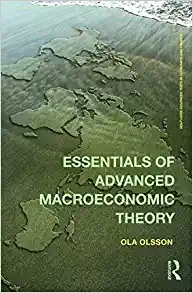Question
1.At the present time, what kind of exchange rate system is used by most countries in the world? A. A fixed exchange rate system B.
1.At the present time, what kind of exchange rate system is used by most countries in the world?
A. A fixed exchange rate system
B. A fractional exchange rate system
C. A fundamental exchange rate system
D. A floating exchange rate system
2.Which of the following statements is true about Business Cycles? (Indicate all that apply.)
A. Business cycles are a demand-side phenomenon, caused by changes in demand for physical capital
B. Business cycles occur in economies that have a large capital goods sector arising from industrialization
C. Business cycles occur most often in economies where most of the jobs are in agriculture
D. Business cycles are a supply-side phenomenon resulting from businesses acquiring too much inventory
3.If actual savings, taxes, and imports all increase, what other accounts must change in order to restore national income to its original equilibrium?
A. Bank reserves and the money supply must both increase
B. Government spending and the money supply must both increase
C. Investment, government spending, and/or exports must increase
D. The unemployment rate and the inflation rate must both go down
4.What is the purpose and some of the uses of a price index? (Indicate all that apply.)
A. A price index is used to convert nominal values to real values measured in the price level of a previous 'base' year
B. A price index is used to calculate an annual inflation rate
C. A price index allows us to show an aggregation of individual prices as a general price level for that sector of the economy, e.g. all consumer purchases.
D. A price index allows us to convert a change in individual product prices to a change in the budget of consumers who purchase those products
5.If both lenders and borrowers are expecting an increased rate of inflation, what effect does this have onnominalinterest rates in the market for loanable funds?
A. Inflationary expectation causes the demand curve to shift to the right while the supply curve shifts to the left, which both cause nominal rates to rise, and to rise at the same rate as the inflation rate
B. An expectation of inflation affects borrowers but not lenders, so the demand curve will shift to the left and cause nominal interest rate to fall
C. An expectation of inflation affects lenders but not borrowers, so the supply curve will shift to the right and cause nominal interest rates to fall
D. Inflationary expectation on both sides of the market will not affect nominal interest rates because it will cause the demand curve to shift to the left while the supply curve shifts to the right, leaving the nominal price of money unchanged
6.What is the difference between the discount rate and federal funds overnight rate?
A. The discount rate is the rate the Federal Reserve Bank charges to banks on 28-day loans, and the federal funds rate is the rate banks charge to one another on overnight loans
B. The federal funds rate is the rate banks charge to one another on overnight loans, and the discount rate is the rate the banks charge to their best corporate customers
C. The discount rate is the rate banks charge to one another on overnight loans, and the federal overnight funds rate is the rate the federal reserve bank charges on 28-day loans
D. The federal funds overnight rate is the rate banks charge to their best corporate customers, and the discount rate is the difference between the rate that banks pay to the Federal Reserve Bank and the rate they can charge to their customers
7.How is therealinterest rate affected by inflation?
A. Nominal interest rates adjust to inflation so that the real interest rate is not affected by inflation
B. Real interest rates change inversely with inflation; when inflation goes up, real interest rates go down
C. Real interest rates rise and fall by the same rate as the rate of inflation
Step by Step Solution
There are 3 Steps involved in it
Step: 1

Get Instant Access to Expert-Tailored Solutions
See step-by-step solutions with expert insights and AI powered tools for academic success
Step: 2

Step: 3

Ace Your Homework with AI
Get the answers you need in no time with our AI-driven, step-by-step assistance
Get Started


